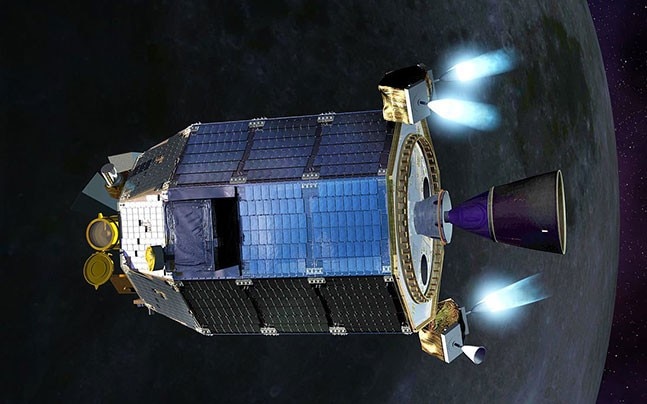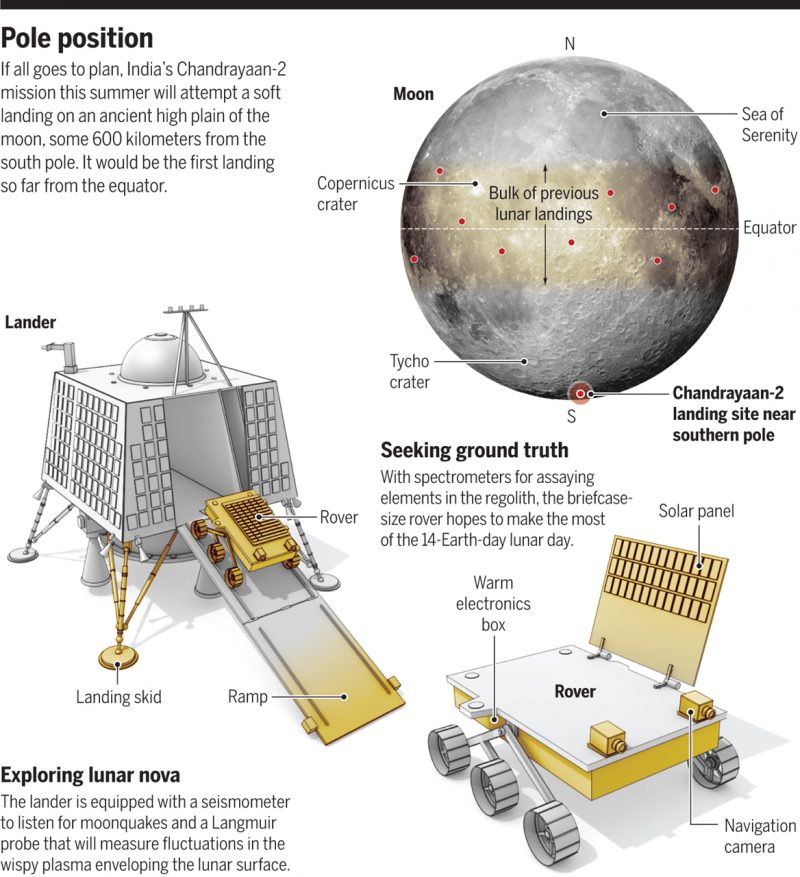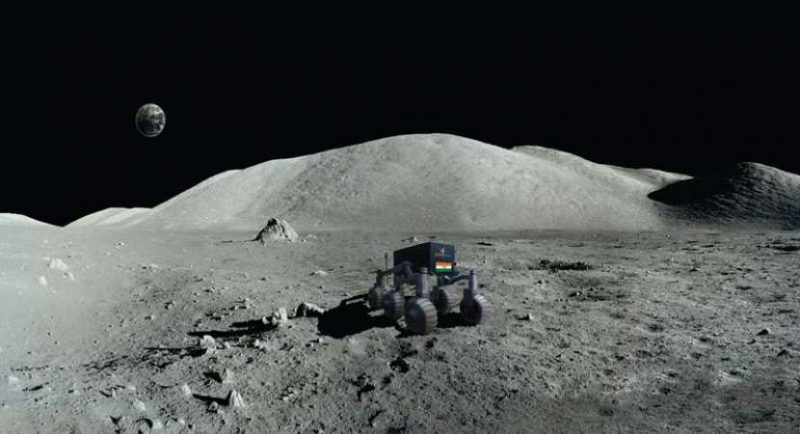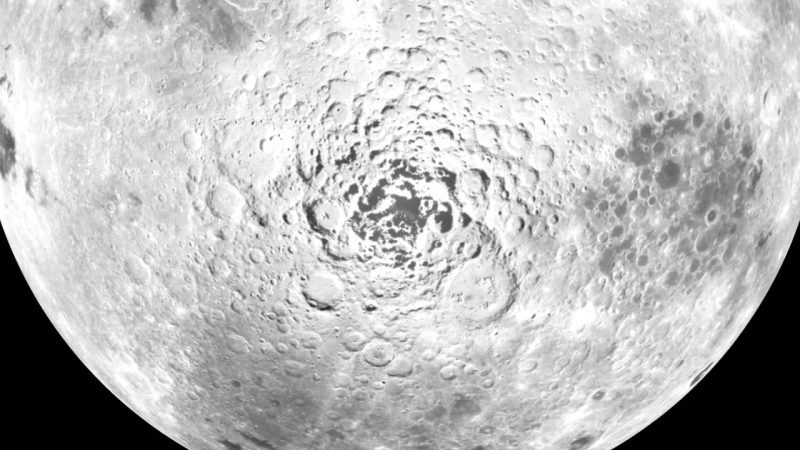
So far, only three countries have successfully landed on the moon – the United States, the former Soviet Union and China – but that might change soon, if all goes according to plan. India is preparing to launch its second lunar mission this summer, and this time the goal is to actually land on the surface, near the moon’s south pole. If successful, India would become the fourth nation to land on the moon and the spacecraft, Chandrayaan-2, would be the first of any country to land in that region.
The Indian Space Research Organization (ISRO) announced the plans via Twitter on May 1, 2019. As of now, the spacecraft is scheduled to launch sometime between July 9 and July 16, 2019, from the ISRO launch facility on Sriharikota, an island off India’s southeastern coast.
?? #ISROMissions ??
We are ready for one of the most exciting missions, #Chandrayaan2. Launch window between July 9-16 & likely Moon-landing on Sept 6, 2019. #GSLVMKIII will carry 3 modules of this #lunarmission – Orbiter, Lander (Vikram), Rover (Pragyan).
More updates soon. pic.twitter.com/jzx9CMwUhR
— ISRO (@isro) May 1, 2019
This new mission is more ambitious than any previous Indian mission to the moon, and will include an orbiter, lander (Vikram) and rover (Pragyan). The landing itself won’t happen until September 6, 2019. As ISRO said in a statement:
All the modules are getting ready for Chandrayaan-2 launch during the window of July 9, to July 26, 2019, with an expected moon landing on September 6, 2019. The orbiter and lander modules will be interfaced mechanically and stacked together as an integrated module and accommodated inside the GSLV MK-III launch vehicle. The rover is housed inside the lander.
After landing, the rover is designed to operate for at least 14 days on the surface and drive 1,300 feet (396 meters). That may not sound like a lot compared to NASA’s rovers on Mars, which have been able to drive for many years and travel at least several miles (as well as the Apollo rovers on the moon), but it will be a big accomplishment for ISRO if it succeeds, since it will be their first-ever moon rover. As K. Sivan, ISRO chairman, told The Times of India that, once Vikram lands on the lunar surface on September 6, the rover Pragyan will come out of the lander and roll out onto the lunar surface for about 300 to 400 meters (yards). It will spend 14 Earth-days on the moon, carrying out different scientific experiments. Altogether, he told The Times, there will be 13 payloads in the spacecraft: three payloads in rover Pragyan and the other 10 payloads in lander Vikram and orbiter.

The rover will use three scientific instruments including spectrometers and a camera to analyze the content of the lunar surface and send data and images back to Earth through the orbiter.
The launch of this mission had originally been planned for April 2018, but it was delayed to changes in the spacecraft design. The four-legged Vikram lander (a qualification model) had also suffered a fracture in one of its landing legs during testing earlier this year, contributing to the delay.
The landing near the moon’s south pole will be uncharted territory, where no other spacecraft has landed before. Previous orbiter missions, including India’s Chandrayaan-1, have found evidence for water ice in craters in this region, in locations where there is permanent shadow. With no atmosphere to speak of, temperatures remain exceedingly cold in those areas – about minus 250 degrees Fahrenheit (minus 157 degrees Celsius) – even though they can be boiling hot in sunlit regions. Water ice would be a valuable resource for future crewed missions back to the moon.
This will be India’s second lunar mission. The first, Chandrayaan-1, orbited the moon but did not land. It launched in October 2008 and operated for 312 days, until August 2009. By all measures it was a great success, with the orbiter circling the moon about 3,400 times.


On April 11, 2019, Israel’s Beresheet spacecraft attempted that country’s first landing on the moon – and the first landing of a commercial mission – but unfortunately it crashed after a problem with the main engine in the last few moments before landing. A little earlier, however, on January 3, 2019, China’s Chang’e-4 spacecraft did land successfully on the far side of the moon, another first in lunar exploration.
Hopefully this next mission from India will fare better, as a follow-on to the successful first Chandrayaan-1 mission. If so, this will be the first view from the ground near the moon’s south pole that we will have ever had from any spacecraft. Although studied from orbit, this part of the moon is still virtually unexplored, so it is an exciting opportunity to learn more about our nearest neighbor in space.
Bottom line: If all goes according to plan, India will become the first nation to land a spacecraft near the moon’s south in September of this year. Godspeed!











